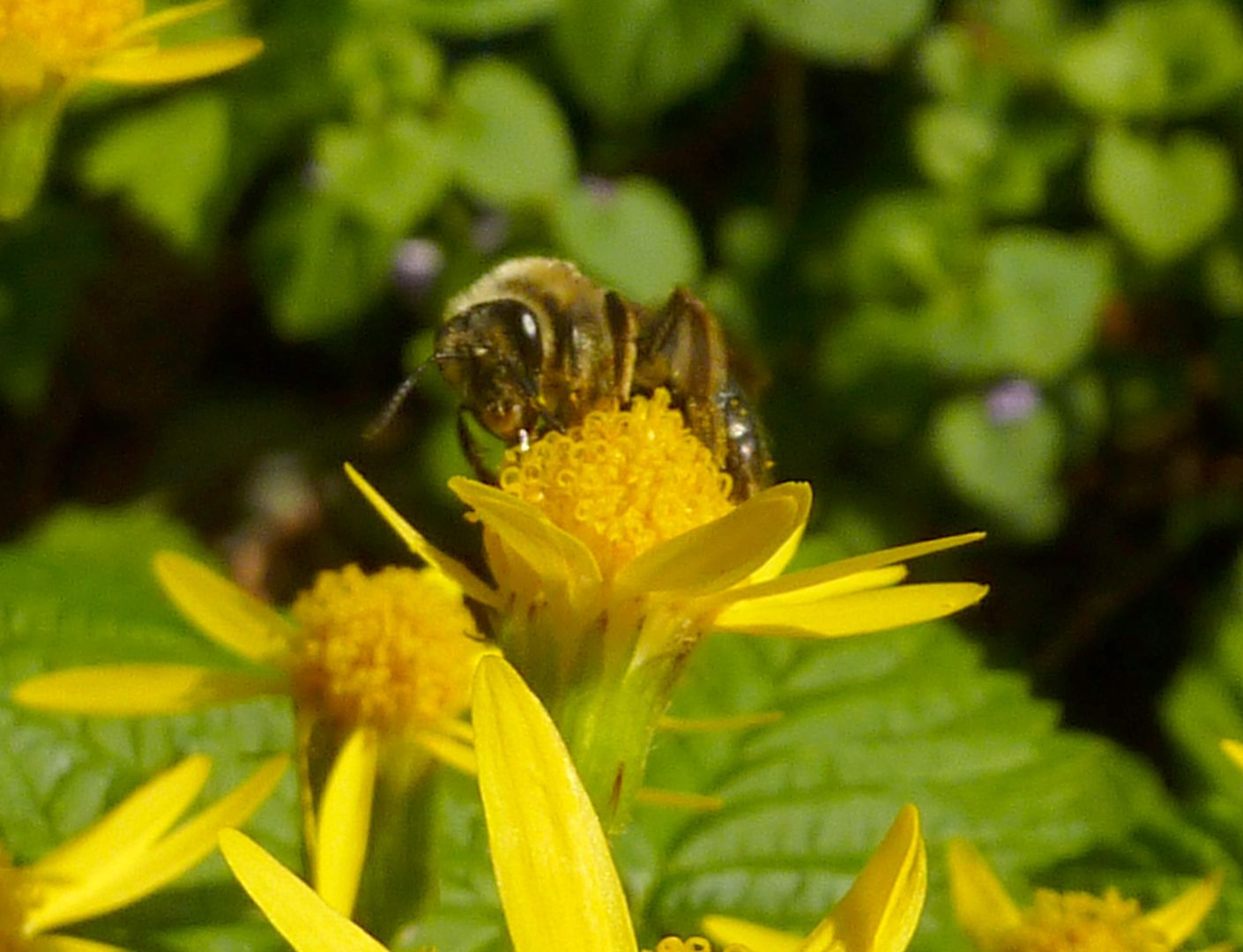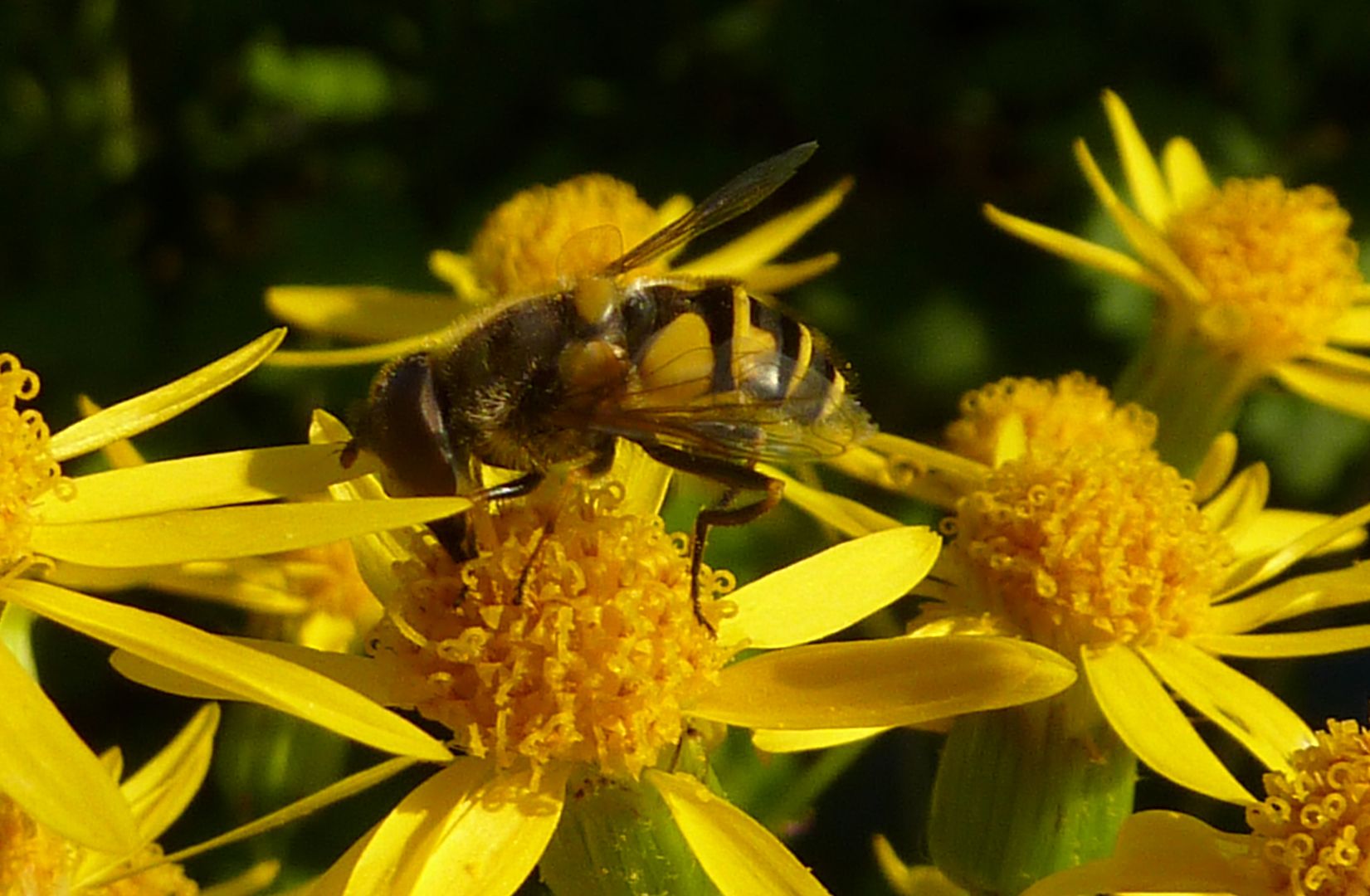The mason bees have been making some real progress. Each capped tube is full and contains upwards of 10 bees give or take for next year. I started with about 100 of the little guys, though I suspect most were males or found nesting elsewhere. There's almost always a bee or two flying in or out filling the tubes. They'll only be around for another few weeks and I'll start taking the full tubes inside. Over the summer parasitic wasps lay their eggs inside the first chamber or two of brood and I don't want that.
Having these bees around is a great way to ensure pollination of fruit trees and blueberry bushes (heath family in general). But pollination is but one issue to getting a good crop. Aphids are already waking up and breeding on some of the trees here. Usually they aren't a problem but every little bit helps make a good harvest.
Thankfully the mason bees also help pollinate spring wildflowers like Roundleaf Ragwort, Packera obovata. I never understood where the name ragwort came from. Golden Flower would be just as good for this plant. It's a round leaved ground cover that moves like a carpet through the forest and in early spring they produce thousands of yellow and gold flowers above them.
Ragwort is one of the few plants also pollinated by Flower Flies. They're also called Hover Flies for their flying habits. Members of the Syrphini tribe, these beneficial insects are colorful flies that lay eggs in patches of aphids. The resulting grubs (maggots) take care of your aphid problem and aren't bothered by ants that may be guarding them.
They are a much better solution to the aphid problem than lady bugs in my opinion. Lady bugs stand out in a crowd and ants are quick to harass them away. Meanwhile flower fly grubs munch away on the aphid herd. A benefit for sure.
When the ragwort stops blooming they turn to Yarrow but we're not there yet in the year. Small flowers seems to be the key to attracting Syrphini to your yard. There are a few exceptions of course but they're pollinators all the same.



